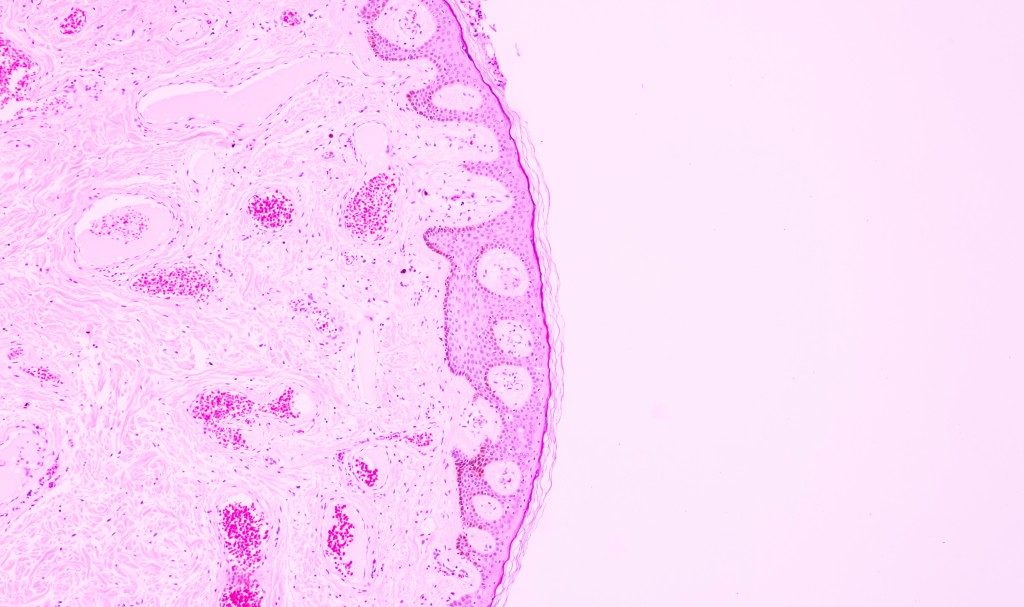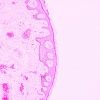
AsianScientist (Oct. 18, 2025) – Researchers in Bengaluru, India, have discovered why a specific mutation leads to tumorous growth in human lungs. The same mutation, however, fails to develop a tumor in human breasts, reducing the chances of a cancer.
The study, published in the journal eLife, was conducted by researchers from the Department of Bioengineering and the Department of Physics at the Indian Institute of Science.
They focused on the human epithelial tissues, the thin sheets of cells that line our vital organs. That’s because “eighty percent of all human cancers begin in epithelial tissues,” said Amrapali Datta, a PhD student at the Department of Bioengineering and first author of the paper.
She explained that epithelial cells act as the body’s first barrier and are constantly exposed to stress, damage, and mutations. In fact, both the lung and the breast epithelial tissues display ‘epithelial defense against cancer’ — the epithelium’s natural act against tumorous cells. That’s why the group tested a specific cancerous mutation that occurs in both breast and lung epithelial tissues.
Researchers have long recognized that breast and lung epithelial tissues exhibit distinct differences. Breast epithelium is relatively stable and compact — the cells are tightly packed with stronger junctions. On the other hand, lung epithelium expands and relaxes with each breath, which is why its cells are more flexible, elongated, and loosely connected.
The group, through a combination of live imaging and computer models, has determined how these differences directly lead to the lung epithelium being more prone to growing tumors compared to the breast.
Once a cancerous mutation sets in the breast tissue, single mutant cells are pushed out, and groups of cells get stuck together. In lung tissue, the same mutant cells spread easily and make finger-like shapes.
The team found that the “tug-of-war” forces between normal and mutant cells decide whether cancerous cells are removed, trapped, or allowed to grow. Thus, cell mechanics help explain tissue-specific cancer risk. “The surprise was how directly those mechanics determine whether mutant cells are restrained or allowed to spread,” said Datta.
A belt forms around the tumor in the breast epithelia, raises tension, jams the mutant cluster, and often forces out single mutants. Thus, this belt restrains the tumor.
In the lung epithelia, the cells are more elongated, motile, and weakly connected. So, no such belt forms, allowing the mutant cells to survive, grow longer, and spread into the tissue.
However, Datta cautioned that the team hasn’t proven a direct link between these mechanics and the biological behavior of these tissues. It’s not clear what causes the mechanical loosening or tightening of the border between the mutant and non-mutant cells, in the first place.
Proving the link would require them to enhance the lung epithelial cells’ ability to restrain mutant cells by forming a belt around them. “If we can do that, it would be a strong demonstration that the tissue’s mechanics are not just correlated with, but actually control, the fate of mutant cells,” said Datta.
The group’s work demonstrates a pathway to resisting the growth of mutations into tumors, and eventually, into cancers. The pathway utilizes the ability of healthy cells to sense and eliminate abnormal or misfit neighbors physically. “Strengthening or preserving this mechanical balance might therefore help prevent cancers from ever establishing themselves,” said Datta.
On the other hand, chronic inflammation, smoking, or exposure to pollution can weaken lung cells’ natural defence against cancer. Maintaining tissue health by controlling inflammation and avoiding environmental damage may also preserve the epithelial cells’ anti-cancer defense.
More work remains to be done, as the same mechanics may not apply in living tissues within the body. “The long-term vision is to translate these mechanical insights into early-stage cancer prevention strategies,” said Datta.
—
Source: Indian Institute of Science ; Image: Komsan Loonprom/Shutterstock
The study can be found at Differential interfacial tension between oncogenic and wild-type populations forms the mechanical basis of tissue-specific oncogenesis in epithelia

